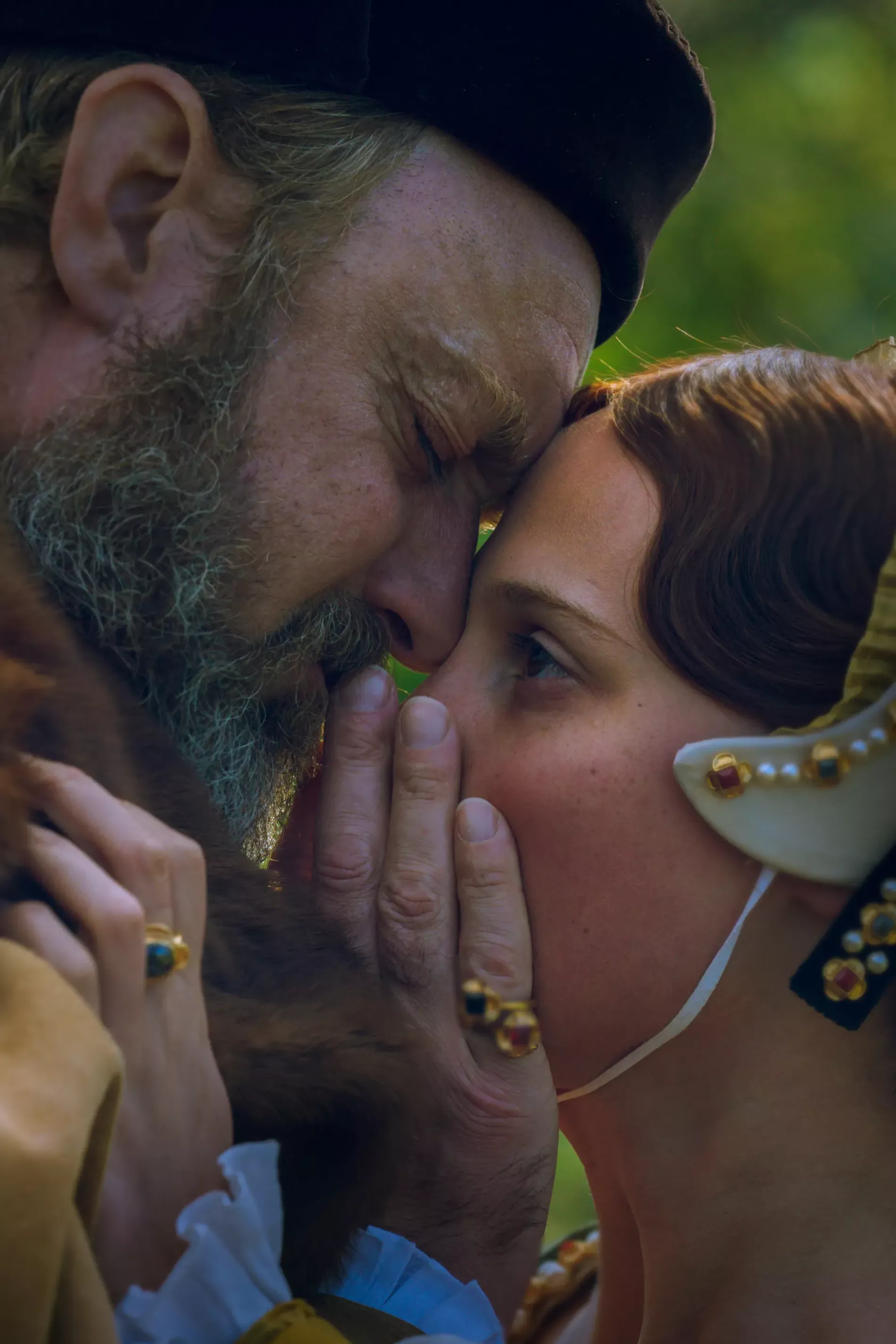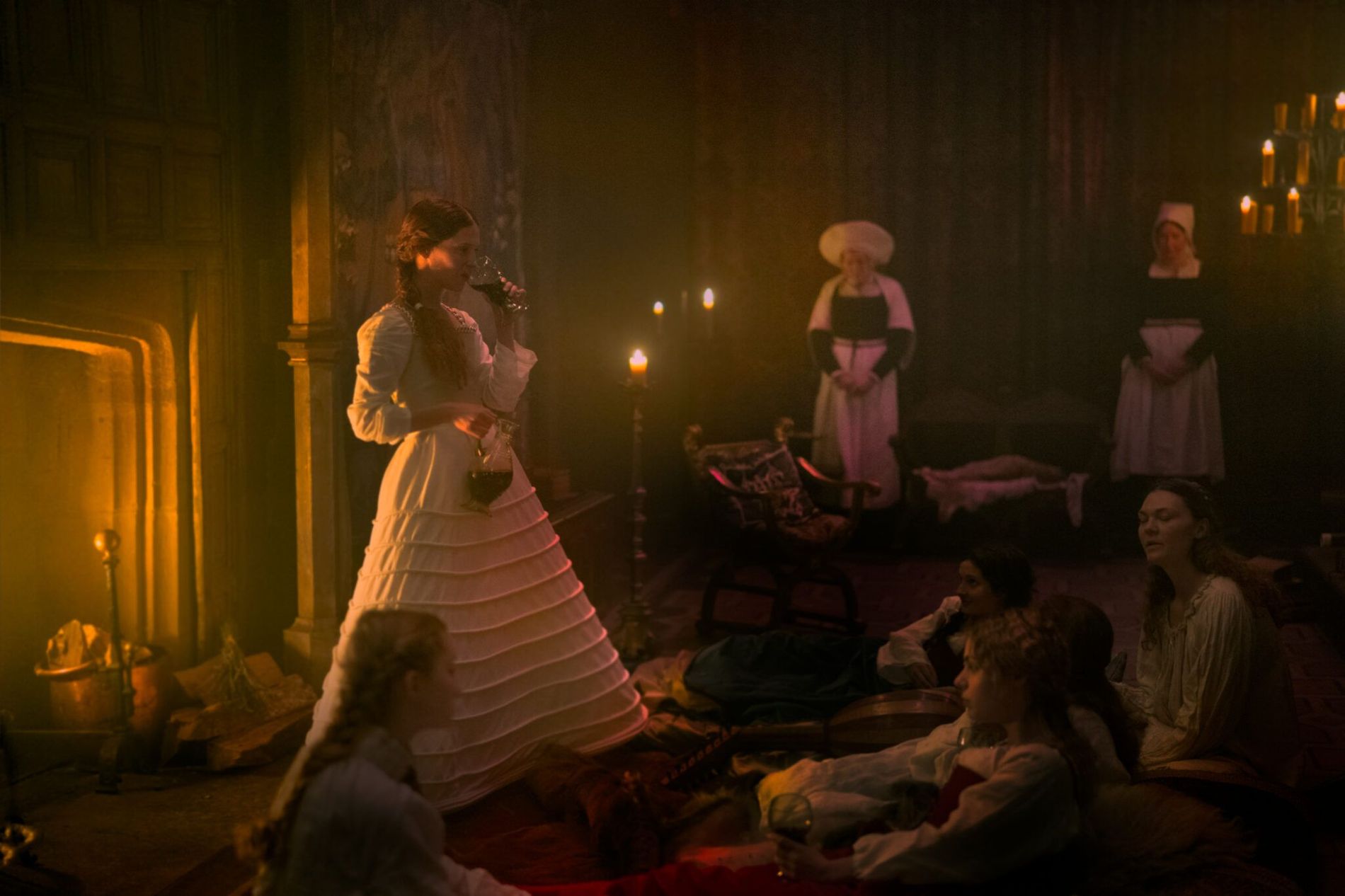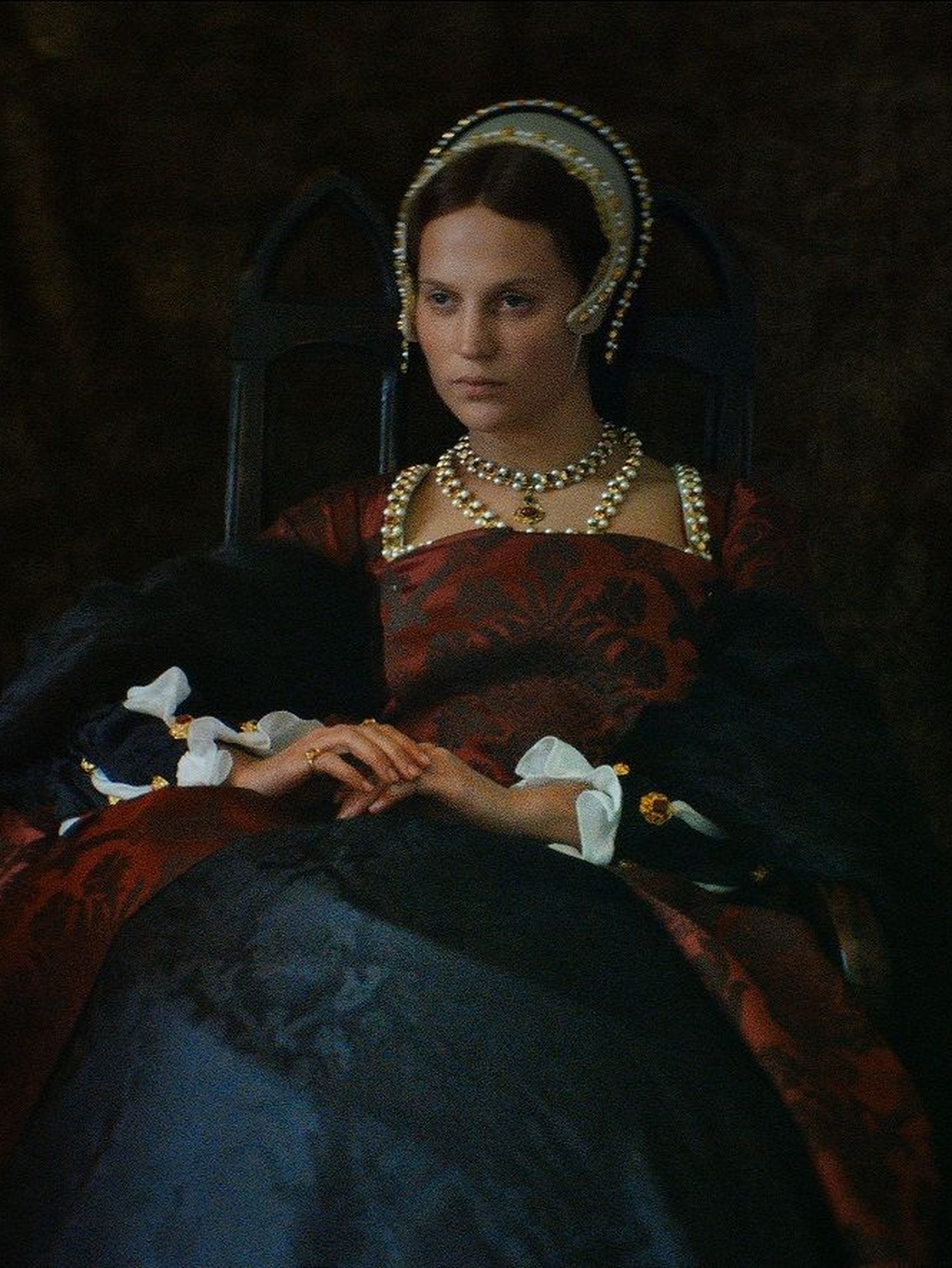The much-awaiting film, starring Alicia Vikander, provides an alternative history – but what was Katherine Parr's marriage to Henry VII really like?
Karim Aïnouz’s Firebrand, an audacious retelling of the story of Henry VIII’s sixth and final wife, Katherine Parr (Alicia Vikander, opposite Jude Law’s raging monarch), opens with a statement about the nature of history, noting that it “tells us a few things, mostly about men and war”, but that everything else is often “wild conjecture”.
That is exactly what this sumptuous period drama aims to be – taking its lead from Elizabeth Fremantle’s historical novel Queen’s Gambit, it imagines the final years of Tudor England under the formidable King’s reign, and his death which, in this version of the tale, is hastened by the Queen herself. While there’s no evidence of this, there are also kernels of truth in the film’s depiction of the couple and their tumultuous marriage.
Below, we outline everything you need to know about the real-life relationship between Katherine Parr and Henry VIII.
When did Katherine Parr and Henry VIII meet?
While Firebrand opens with Katherine already on the throne, acting as regent while her husband is on a military campaign in France in 1544, the 32-year-old had already, by that point, lived a rather full life. She had been both married and widowed twice, by Sir Edward Burgh and John Neville, and was in love with the influential Thomas Seymour before she caught the King’s eye. In order to remain at court following Neville’s death, Katherine utilised her late mother’s friendship with Catherine of Aragon to reestablish her own closeness with her daughter, Lady Mary. By the end of 1542, Katherine had secured a position in the princess’s household, and this was when she first met Henry.
Once he chose her as his sixth wife, she is said to have felt duty-bound to accept his proposal over Seymour’s, though some historians argue that her decision could also have been motivated by her awareness that the ailing King may not have much longer to live. (Henry’s health was then in decline due to his obesity and a severe leg wound, sustained during a jousting accident, which had become ulcerated.) The pair were married at Hampton Court Palace on 12 July 1543.
Related: Alicia Vikander's stylist Victoria Sekrier breaks down every single one of the actress’ Cannes looks

Photo: Brouhaha Entertainment
Did Henry VIII’s relationship with Katherine Parr sour towards the end of his life?
In Firebrand, the couple’s marriage is thrown into crisis upon Henry’s return from France, and Katherine is shown to come perilously close to losing her life. There is some truth to this: the Queen was a vigorous supporter of the English Reformation and was known to occasionally push her own evangelical views too far in her religious discussions with Henry. Her ideological opponents suspected that she was actually a Protestant – a view supported by the ideas expressed in her third book, The Lamentation of a Sinner, published in 1547, after the King’s death – and a plot was hatched to turn Henry against her. An arrest warrant was eventually drawn up, but Katherine received prior warning of it and threw herself on the King’s mercy, pleaded for forgiveness and managed to reconcile with him.
There is a scene early on in Firebrand in which we see Katherine doing just that, after criticising his decision-making, but her relationship with Henry never fully recovers from that indiscretion. By contrast, in real life, Katherine and Henry appear to have been on good terms on the eve of his death. Shortly before it, Henry made provisions for a generous yearly allowance to be paid to his wife and ordered that, even after his passing, she be given the respect of a Queen of England, as if he were still alive.
What was Katherine Parr and Henry VIII’s marriage actually like?
Katherine’s marriage to Henry would last three and a half years, until his death on 28 January 1547, and over the course of this period she is believed to have had a positive impact on his family life. She was partially responsible for reconciling Henry with princesses Mary and Elizabeth, and developed a strong bond with his son Edward – relationships which are highlighted in Firebrand.
It’s also true that she was appointed regent in Henry’s absence. While the film shows her power in this respect to be fairly limited, in truth, Katherine was able to obtain effective control and rule as she saw fit, mainly due to the fact that her regency council was made up of loyalists. She handled finances and provisions for the King’s campaign against the French, signed five royal proclamations, and liaised with lieutenants on the instability in Scotland.

Photo: Brouhaha Entertainment
Her reputation as a scholar, as shown in Firebrand, is founded in fact, too: in 1544, Katherine anonymously published Psalms or Prayers, a translation of a Latin work by bishop John Fisher, and followed it up with Prayers or Meditations in 1545, a compilation of vernacular texts for personal devotion. The latter was the first English-language book in the country to be published by a woman under her own name, and was later translated into Latin, French and Italian by Princess Elizabeth, as a gift for her father. (In Firebrand, Katherine is shown helping Elizabeth with her religious translations.)
There’s also something to be said of the film’s dismantling of the popular notion that Katherine was a saintly, motherly nurse to the weakened King. Promoted in the 19th century by Victorian moralist Agnes Strickland, the idea has been widely discredited in recent years by biographers who have instead described her as strong-willed and outspoken – a characterisation more in keeping with her achievements as a trailblazing writer and successful Queen regent. However, it’s highly unlikely that her relationship with Henry was anywhere near as combative as it is shown to be in the film.
Did Katherine Parr have a hand in Henry VIII’s death?
There is nothing to suggest this, though the circumstances of Henry’s death are somewhat mysterious. In his final months, the King was crippled by his obesity and the festering wound on his leg, and also possibly suffering from gout and scurvy, but historians disagree over the exact cause of death. Theories range from a strong fever to a cardiac arrest, though none seem to implicate Katherine.
What happened to Katherine Parr after Henry VIII’s death?
While Firebrand ends on a triumphant note – with Katherine’s victory over Henry, and an acknowledgment of her influence on Elizabeth I – in reality, the Queen’s life came to a tragic end less than two years later. After Henry’s demise and the coronation of Edward VI, she retired from court and finally married Thomas Seymour, only to die shortly after giving birth to their daughter. Katherine’s profound impact on Elizabeth and her future reign, however, is undisputed.
Originally published on British Vogue
